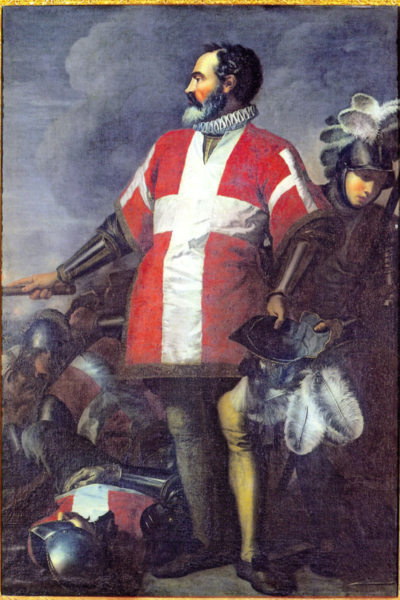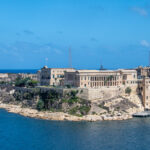| Malta Short Let: Cozy Stay in Gzira | |
|
Sliema Area Modern Designer Finished 2 Bedrooms + Games Room. First floor with Maltese Balcony Large back Terrace with swinging sofa Fully Airconditioned + Full Kitchen 3 TVs, including 65” with backlight. |
 |
|
Book Now: Google Travel | Direct (Cheapest) | Booking.com | Airbnb |
|
Pic Credit : Wikimedia commons
Embarking on a journey of faith and service is a noble calling, and few organizations represent this commitment more profoundly than the Sovereign Military Order of Malta. Rooted in nearly a thousand years of history, the Order has evolved into a distinguished institution that combines religious devotion with active humanitarian service. This article will guide you through the process of becoming a Knight or Dame of Malta, exploring the Order’s history, the different classes of membership, eligibility criteria, and the steps required to join.
I. Understanding the Order of Malta
A. History and Mission
The Sovereign Military Order of Malta was founded in Jerusalem around 1050 with a mission to care for pilgrims, regardless of their faith. Initially, the Order focused on providing hospitaller services, tending to the sick and poor. However, during the Crusades, the Order expanded its mission to include military defense, safeguarding pilgrims and Christian territories in the Holy Land.
As the centuries passed, the Order adapted to changing times. While the military aspect of its work diminished, the Order’s commitment to humanitarian causes only grew stronger. Today, the Order of Malta remains active in over 120 countries, engaging in medical, social, and disaster relief initiatives, while continuing to uphold its dedication to defending the Catholic faith.
For a bit of history on the knights you can see the following:
- Fort St Elmo
- Fort St Angelo
- 10 Facts about the knights of Malta
- Some mysteries surrounding the knights of Malta
- The history of the knights of Malta
For those interested in exploring the rich history of the Order of Malta firsthand, a visit to Malta itself is highly recommended. While in Malta, consider staying at a comfortable apartment in Sliema or Gzira , which offers easy access to many historical sites. From here, you can embark on day trips to various locations significant to the Order’s history, such as Fort St. Angelo or Fort St. Elmo. These excursions provide valuable context for understanding the Order’s enduring legacy.
B. The Order Today
The Order of Malta is unique in that it functions as both a lay religious order and a sovereign entity recognized under international law. With diplomatic relations in numerous countries, it operates as an independent organization. Membership consists of over 13,500 Knights, Dames, and Chaplains, supported by a wide network of volunteers, medical professionals, and humanitarian workers.
II. Classes of Membership
There are three classes of membership within the Order of Malta, each with distinct roles and responsibilities.
A. First Class: Knights of Justice
Members of the First Class, known as Knights of Justice, take solemn religious vows of poverty, chastity, and obedience. These individuals dedicate their entire lives to the spiritual and charitable missions of the Order. They form the core of the Order’s religious leadership, offering governance and spiritual guidance to the broader membership.
B. Second Class: Knights and Dames in Obedience
The Second Class is composed of members who promise to live in accordance with Christian principles, though they do not take religious vows. They commit themselves to the Order’s works while maintaining secular careers. These members actively participate in both the spiritual and humanitarian life of the Order, playing a vital role in its ongoing missions.
C. Third Class: Knights and Dames of Magistral Grace
The majority of the Order’s membership belongs to the Third Class. These lay members take an oath of fidelity to uphold the principles of the Order, though they are not required to take religious vows. They are deeply involved in charitable activities and are expected to live exemplary Christian lives in their personal and professional endeavors.
III. Eligibility Criteria
To join the Order of Malta, candidates must meet several important criteria.
A. Faith Requirements
Prospective members must be practicing Catholics, baptized and confirmed within the Roman Catholic Church. A regular and active spiritual life, including participation in the sacraments, is essential.
B. Moral and Ethical Standards
The Order seeks individuals of the highest moral integrity. A proven commitment to service, demonstrated through charitable work or community involvement, is a key factor in the selection process.
C. Age and Citizenship
Candidates must generally be at least 18 years of age and must be citizens or legal residents of the country in which they are applying. The application process is conducted through the National Association or Priory in their region.
D. Sponsorship
An essential component of the application process is securing sponsorship from a current member of the Order. This sponsor will act as a mentor, helping the candidate understand the Order’s mission and expectations.
IV. The Application Process
A. Expression of Interest
The first step toward membership is expressing interest by contacting the local Priory or National Association. Prospective members are encouraged to attend informational meetings or events to learn more about the Order’s activities and ethos.
B. Submission of Application
Candidates are required to submit a detailed application, including personal information, proof of sacraments, a curriculum vitae, and letters of recommendation from clergy and other reputable individuals. A personal statement explaining the candidate’s motivations for joining the Order is also required.
C. Period of Formation (Aspirancy)
Once an application is accepted, the candidate enters a period of formation, typically lasting one to two years. During this time, they are expected to participate in the Order’s charitable works and spiritual programs, while gaining a deeper understanding of its history and mission.
D. Evaluation and Approval
Throughout the formation period, the candidate will be evaluated by the Admissions Committee. Feedback will be provided on their progress, and the Council will ultimately decide whether to approve their application.
E. Investiture Ceremony
Upon approval, the candidate is formally inducted into the Order during an investiture ceremony. This public event, often held during a Mass, includes the taking of the Oath of Fidelity, officially welcoming the individual as a Knight or Dame of Malta.
V. Life as a Knight or Dame
Becoming a member of the Order of Malta is a lifelong commitment to both spiritual growth and charitable service.
A. Commitments and Responsibilities
Members are expected to actively participate in the Order’s humanitarian missions and local charitable initiatives. Regular attendance at meetings, spiritual retreats, and other gatherings is encouraged.
B. Opportunities for Service
Knights and Dames have numerous opportunities to engage in volunteer work, aiding the sick, the poor, and the marginalized. Those who demonstrate leadership abilities may also be invited to take on administrative or governance roles within the Order.
C. Spiritual Growth
In addition to their charitable duties, members are encouraged to cultivate their spiritual lives. This includes deepening their faith through prayer, the sacraments, and reflection, and forming bonds with fellow members who share their commitment to faith and service.
VI. Frequently Asked Questions
A. Can Non-Catholics Join the Order?
No, membership is reserved for practicing Catholics in communion with the Holy See.
B. Is Nobility Required for Membership?
No, members are chosen based on their commitment to the Order’s mission, not nobility.
C. What Are the Financial Obligations?
Members may contribute annual dues and support charitable initiatives, varying by region.
D. Can Women Join the Order?
Yes, women can join as Dames and fully participate in the Order’s activities.
E. Is There a Military Aspect Today?
No, the Order focuses on charitable and humanitarian work, though it preserves its traditions.
F. How Are Members Selected for Different Classes?
Answer: Members are placed into one of three classes based on their vows and level of involvement.
G. What Is the Process for Becoming a Member?
Candidates apply, undergo a period of formation, and are formally inducted after approval.
H. What Are the Spiritual Commitments of Members?
Members are expected to live according to Christian principles and participate in sacraments.
I. Can Clergy Join the Order?
Yes, clergy can join as Conventual Chaplains and provide spiritual guidance to members.
J. How Is the Order Governed?
The Grand Master leads the Order, supported by councils, and regional governance is managed by Priories and Associations.
K. What Happens During the Investiture Ceremony?
Members take the Oath of Fidelity during a formal ceremony, usually held during a Mass.
VI. Conclusion
The path to becoming a Knight or Dame of Malta is a profound journey of faith, service, and dedication. For those who feel called to this noble mission, the Order offers a unique opportunity to live out one’s Catholic faith while making a tangible difference in the world. If you are interested in pursuing this vocation, reach out to your local Association to begin your journey today. Joining the Order is not merely a personal honor but a lifelong commitment to serving God and humanity.
Additional Disclaimer:
For more detailed information regarding the Sovereign Military Order of Malta, its history, membership process, and official regulations, please visit the official website of the Order of Malta at https://www.orderofmalta.int and refer to the official 2022 Constitutional Charter and Code, available at https://www.orderofmalta.int/wp-content/uploads/2022/11/Sovereign-Order-of-Malta-Constitutional-Charter-and-Code-2022.pdf.
Planning to visit Malta? Consider our two favourite accommodations










